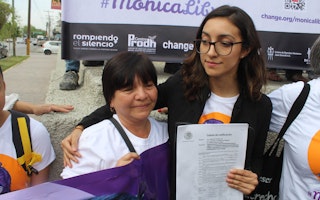A comprehensive study of criminal cases over the last 15 years in which the defendant was exonerated suggests that there are thousands, maybe even tens of thousands, of innocent people in prison in the United States today.
The report focuses on 328 cases—all almost exclusively murder and rape crimes—since 1989, the year of the first DNA exoneration. But the count is conservative, the report stresses. It notes that other categories of cases with false convictions have not been detected, including rape convictions that have not been reexamined with DNA evidence; robberies for which DNA identification is useless; murder cases that are ignored because the defendants were not sentenced to death; and assault and drug convictions that are forgotten entirely.
The report, funded by OSI's Gideon Project and prepared at the University of Michigan, uncovers some clear patterns in the false convictions that have come to light:
- For rape, the dominant problem is eyewitness misidentification—particularly cross-racial misidentification, which accounts for an extraordinary number of false rape convictions with black defendants and white victims.
- For murder, the leading cause of false convictions is perjury—including perjury by participants or eyewitnesses to the crime who knew the innocent defendants in advance. False confessions also played a large role in the murder convictions that led to exonerations, primarily among juveniles and those who are mentally retarded or ill. Almost all the juvenile exonerees who falsely confessed are African American, and 90 percent of all exonerated juvenile defendants are black or Hispanic.
The full report is available for download.
Read more
Homicide Reduction
Q&A: How One Colombian City Is Tackling Violent Crime

Palmira, Colombia, is one of the most violent cities in the world. But a prevention program focusing on youth has reduced crime significantly—and earned it an international peace prize. The city’s mayor on what’s working.
In Remembrance
Lani Guinier’s Overlooked Education Legacy

The late Lani Guinier thought deeply about the intersection between education and criminal justice. Her leadership at Open Society helped pave the way to colleges across the country offering higher education to the incarcerated.
WOMEN'S RIGHTS
Challenging Mexico’s Abusive Preventative Detention System

Mónica Esparza’s case is one of the most notorious cases of extreme gender violence carried out by Mexican authorities. What her story teaches about how to combat the country’s scourge of gender-based violence.
